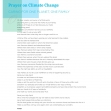

Sisal: Income and Industry for Madagascar
Under a large tree by a busy road, Marie Jeanne sits among 12 of her neighbors. They talk and laugh as their hands expertly twist, weave, sort and sew sisal fibers into vibrant hats, handbags, and other items that they can sell.
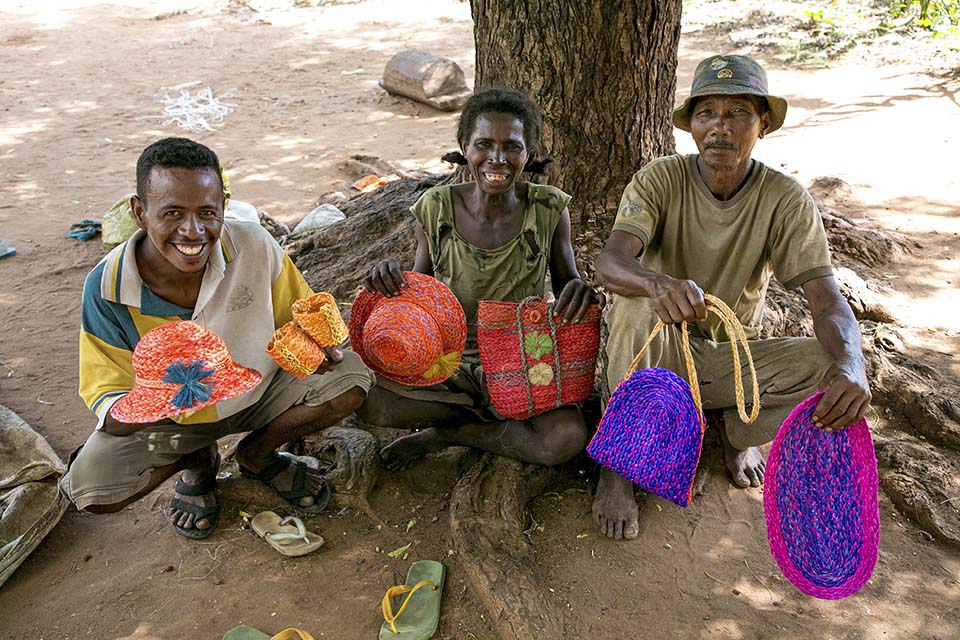
Kalive Razafimahatratra, Marie-Jeanne, and Briino, left to right, hold crafts that they and their community make from sisal plant fibers and share profits from sales.
Photo by Jim Stipe/CRS
For generations, sisal has grown abundantly across Madagascar. It’s easy to maintain and because of its deep taproots can withstand harsh winds and floods. Communities have primarily used it for making rope. In 2018, through a project called Fararano, which means “harvest season” in Malagasy, Marie Jeanne and 9/14 others living in the rural village of Anjaposa learned to dye and weave sisal into more elaborate—and marketable—products.
“Fall armyworm and crickets just ruined a major part of the crop, which means that we totally rely on sisal now. Also, the money we get from sisal is almost three times higher than the amount from farming,” Marie-Jeanne says.
Most poor families in southern Madagascar depend on rain-fed farms for food and income. But longstanding drought, destructive cyclones and pests have caused poor harvests over the past five years.
Before learning to weave sisal, Marie-Jeanne and her neighbors burned trees to produce and sell charcoal. However, the impact of charcoal production on local forests, plant and animal life, is damaging Madagascar’s tremendously diverse and precious ecosystem. Sisal is an ideal alternative because it is a locally available, easily sourced raw material the community already knows.
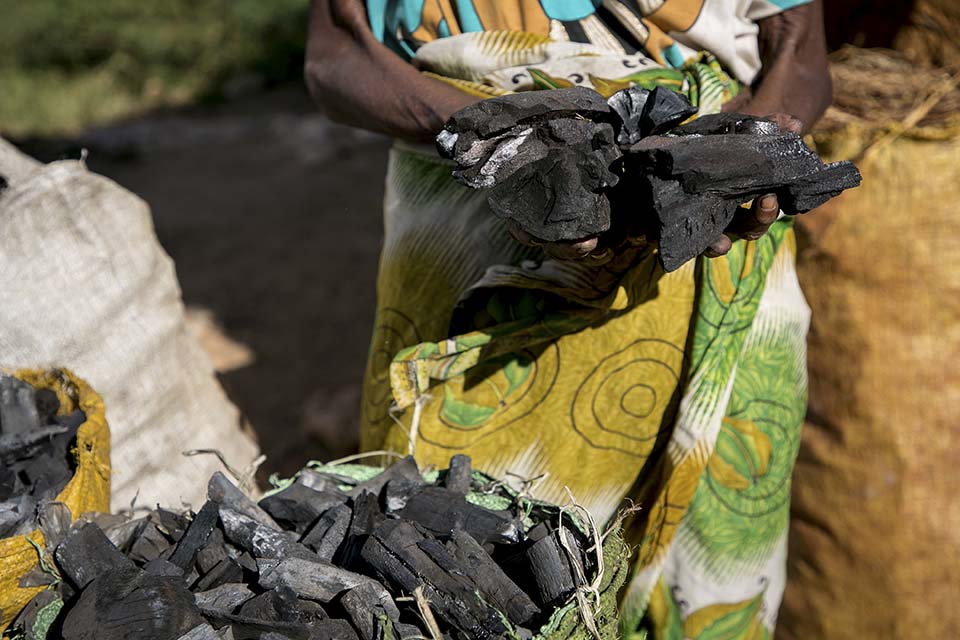
In this part of southern Madagascar, people cut down trees to turn into charcoal as a means of income, but the deforestation that results causes other problems in the area.
Photo by Jim Stipe/CRS
Holding down dunes
Over 200 miles away in the village of Anjongo, sisal is being used in a completely different way to improve the lives of people in the area. Sand dunes along the coast cover miles as far as the eye can see. The white sand is a beautiful backdrop to the ocean, but it can be deadly. Dunes have shifted and covered neighboring villages and farms. When this happens, families lose their homes and their source of income, and are forced to move.
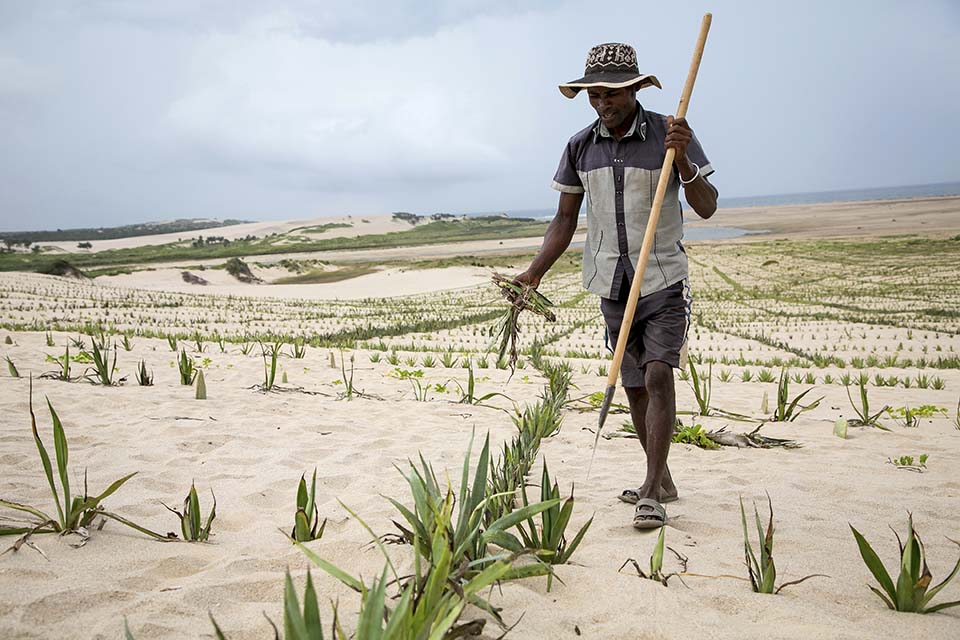
Manjomisy plants sisal on sand dunes to stabilize them and prevent drifting onto farmland and villages.
Photo by Jim Stipe/CRS
“Since I’m a farmer, the harvest I get from my field is my only source of income. I have two children to take care of, so if the dune were to encroach on my field, I would lose my sole source of income. I would do whatever it takes to help stop that sand dune,” says Manjomisy, a farmer in Madagascar.
Through another project funded by the U.S. Agency for International Development’s Food for Peace program, CRS supports members of neighboring communities so they can plant thousands of sisal plants, and other hardy species, on the sand dunes. This keeps the dunes from moving and covering homes and farms.
Community members who plant sisal on the dunes receive the long-term benefit of protecting their farmland and villages. They also get paid in cooking oil and rice. For the poorest families, this is often the most food they have had to eat in months.
“The food I’m receiving from this dune work is essential for me and my family. If it wasn’t for this, we would have to survive on cactus leaves to feed ourselves,” says Tavisoa, a farmer in Madagascar.
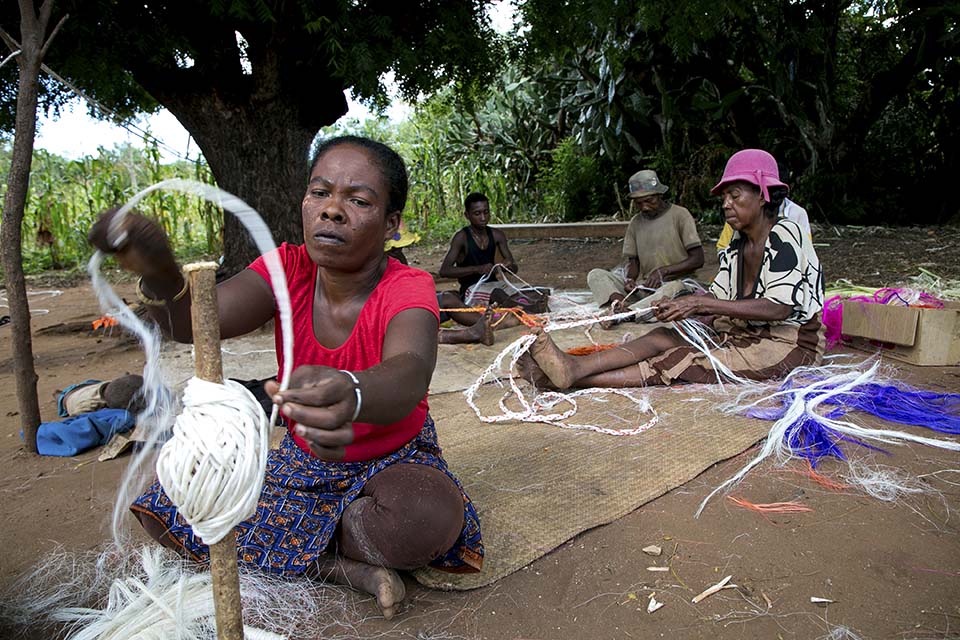
Mirasoa Fitahana twists fibers from a sisal plant into rope.
Photo by Jim Stipe/CRS
Last year, communities in southern Madagascar planted sisal across more than 600 acres. CRS trained 47 people to make items out of sisal so they can earn additional income and feed their families. It might be a stubby, unassuming plant, but for the people of southern Madagascar, sisal is saving lives, protecting homes and providing a vital source of income. These new ways of using sisal will stay with the community long after the project has ended.
